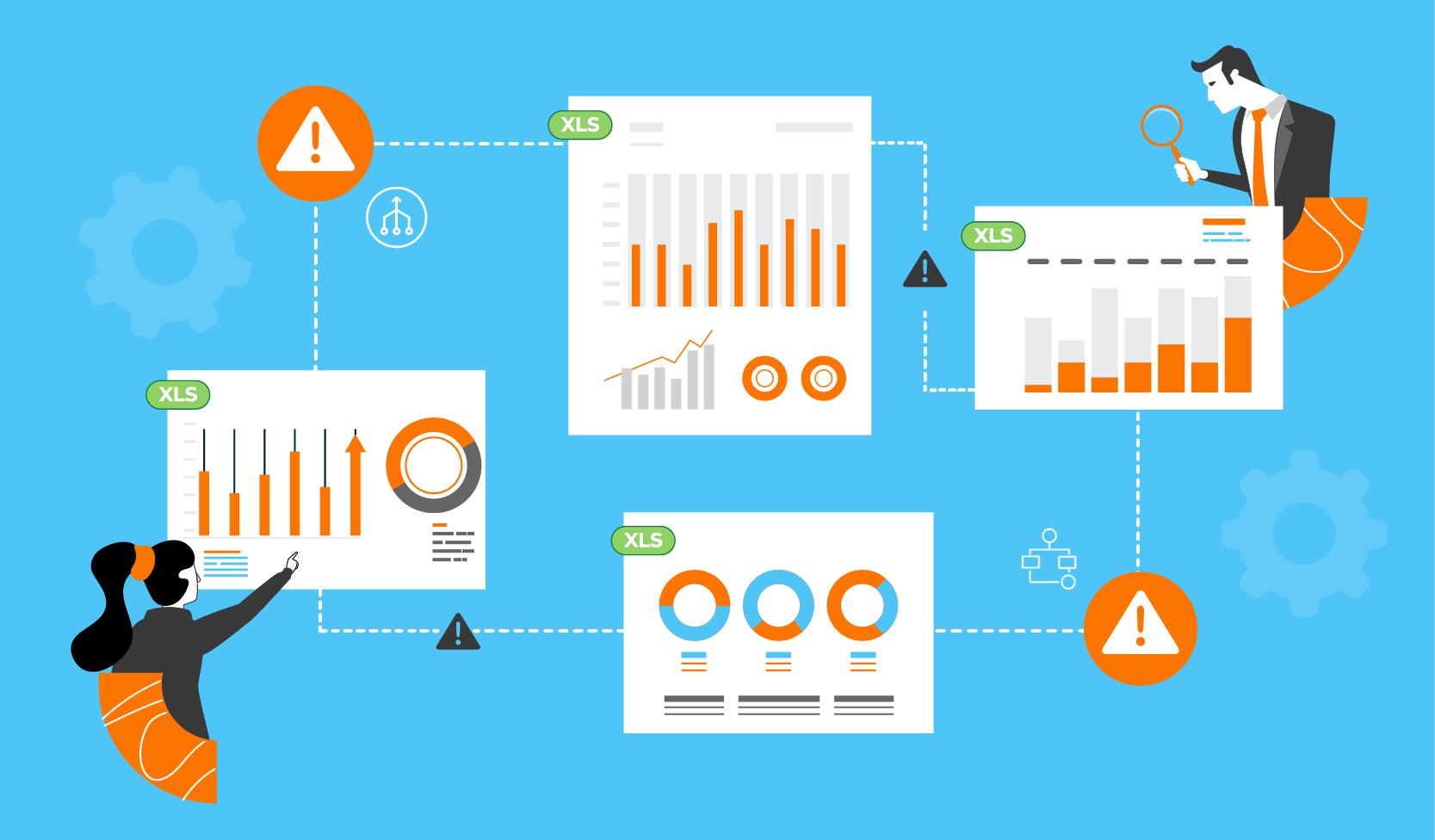
CIO Pulse: Agentic AI + AIOps for Proactive IT Operations
It’s no longer 2025 and a CIO’s job is not just about making sure that servers don’t crash and taking care of uptime. It’s also about being forward thinking in terms of disruption, technology & business growth and proactive operations. As digital transformation grows up, CIOs are also progressing beyond the automation stage and embracing what we’re calling Agentic AI and AIOps—technologies that don’t just automate tasks, but also make decisions, adapt to change, and dynamically optimize IT in real-time.
This blog examines how IT Leaders are harnessing Agentic AI and AIOps to usher in a new era of proactive IT operations. It explains the strategic considerations, and impact, use cases and important KPIs for the board room.
Reactive to Proactive: The IT Operations Revolution
Classical IT operations were founded on a reactionary principle:
- Wait for tickets
- Trigger alert-based automation
- Patch after failure
But in an era of hybrid infrastructure, remote teams, and cloud-native applications, this model just doesn’t work. Downtime costs millions. Misery loves company, after all, and a fix is indeed reprieve. It is no longer good enough to be a reactive IT.
Predictive observability, self-healing systems, and AI-orchestrated workflows are becoming the new must-haves for CIOs.
Defining Agentic AI and AIOps
What is Agentic AI?
Agentic AI is AI that can set, make and also take goals and actions on its own initiative (within ethical and coded limits). Rather than simply responding to defined human prompts as traditional AI does, Agentic AI is able to:
- Observe anomalies
- Identify root causes
- Recommend or execute resolutions
- Escalate intelligently when required
What is AIOps?
AIOps (AI for IT operations) is a broad category of algorithm-driven IT operations platforms that leverage big data, analytics, and machine learning to analyze and automate IT operations processes. It enables:
- Real-time anomaly detection
- Logs and telemetry pattern detection
- Predictive incident prevention
- Closed-loop remediation
Together, these solutions transform IT operations from end to end, hands-on to hands-off, and reactive to predictive.
CIOs' Top Tech Priorities And where this is coming to a head now
1. Complexity Is Exploding
Multi-cloud, edge computing, SaaS stacks, microservices offer new areas of fragmentation within IT. You can't scale human monitoring and response.
2. Talent Gaps Are Growing
IT teams are stretched thin. There’s a worldwide dearth of SREs, DevOps engineers and cybersecurity analysts. CIOs must do more with less.
3. Business Agility Is a KPI
Today, CEOs require CIOs who can enable time-to-market velocity. That means systems that can adjust on the fly, not those that sit there waiting for a reboot from a human.
4. Security Needs Predictive Defense
Threat vectors are increasingly dynamic. Agentic AI, and AIOps, assist in the detection of zero-day weaknesses and the suppression of an attack before it can expand.
Strategic Implications for the Enterprise
A. Continuous Service Assurance
Agentic AI assists CIOs in advancing from SLAs to real-time service assurance. It can simulate user paths, test network robustness, and alert to a decline before users even feel it.
B. Data-Driven Incident Management
AIOps eliminates alert fatigue. By mapping log and metric relationships in real-time, it identifies the most relevant logs and metrics to troubleshoot, reducing MTTD (Mean Time to Detect) and MTTR (Mean Time to Resolve).
C. Cost Optimization
Predictive scheduling for workloads and scaling of the resources would abate over provisioning. This is very important for managing cloud spend and compute costs.
D. Alignment with ESG Goals
Infrastructure can be used to minimize energy waste as well. CIOs can now connect IT operations to sustainability measures, which contribute to enterprise ESG reporting.
Accountability based on roles: What CIOs should take responsibility for
CIO
- Advocate for Proactive Ops Being a Board-Level Discussion It’s a board-level conversation.
- Core to this is tying the ROI of AIOps to uptime, agility and innovation cycles.
- Realize ethical AI regulations for autonomous systems
CTO
- Architectural modernization to accommodate real-time data ingestion and processing
- Establish system boundaries and escalation reflex thresholds for Agentic AI
CISO
- Secure AI deployment: access controls, audit trails and anomaly verification
- Enrich threat intelligence platforms with models.
DevOps/IT Ops Leaders
- Try to do some kind of observability pipelines, data lakes and feedback loops
- Move from task-based positions to managing and orchestrating intelligent systems
Use Cases: When Agentic AI + AIOps Comes into Play
1. Autonomous Root Cause Analysis
An e-commerce site is noticing slow transaction rates. AIOps assists in tracking down the problem to a flaky database node, redirects traffic and only bothers humans if things get worse.
2. Self-Healing Infrastructure
A Kubernetes cluster detects a memory leak from a pod. Agentic AI performs a pod restart and verifies that the performance is restored.
3. Intelligent Scaling
AI projects a 300% increase in load during a product launch. Without cost and manual intervention, it auto-scales the computation resource in real-time.
4. Security Threat Containment
Anomalous outbound traffic is detected. AI quarantines the endpoint, prevents exfiltration, and initiates compliance workflows for reporting.
The Numbers That Matter to the Board
- Time Up (%) with No Human Control
- Average Time to Detect & Respond to Incidents
- Efficiency of resource utilization (CPU, memory, cloud cost)
- AI Intervention Accuracy
- Security Response Time to Zero Days
- Reduced Carbon by Maximization of Infrastructure
Implementation Roadmap for CIOs
Phase 1: Foundation
- Map current levels of observability and automation maturity
- Use log aggregator and anomaly detection tools
- Define KPIs for operational excellence
Phase 2: Intelligence
- Bring in AI models trained on org-specific data
- Create workflows that include thresholds and human-in-the-loop triggers
- Train IT team members to monitor AI
Phase 3: Autonomy
- Deploy primitives with low autonomy Agentic AI only in low hazard regions
- Conduct simulations for high-stakes decisions
- Embed AI into ITSM, CMDB, security platforms
Ethical Considerations
CIOs must address the following:
- Explainability: Is the AI able to explain the reasons behind its decision?
- Bias Remediation: Are all Ai effective across all lines of businesses?
- Auditability: Is there a log of every decision the system makes?
- Rise of the Humans: Are there any fail-safes?
Autonomous does not mean unchecked. Governance must evolve alongside technology.
Conclusion: Autonomous, Yet Responsible The Future Is Here, But Will We Embrace The New Reality?
Just as the CIO role is changing, so, too, are the operational models that will sustain it. Agentic AI and AIOps are a profound change, not only in how systems operate, but in how strategic IT is governed, resourced, and quantified.
These aren’t tools for IT alone. They are levers of innovation, efficiency and resilience.
The future of IT operations is not simply the business of keeping the lights on — it’s about making sure those lights are intelligent, responsive, and never turn off unpredictably.
For CIOs poised to lead proactively, the collision of Agentic AI and AIOps is not just well timed — it’s nothing short of trans-formative.


